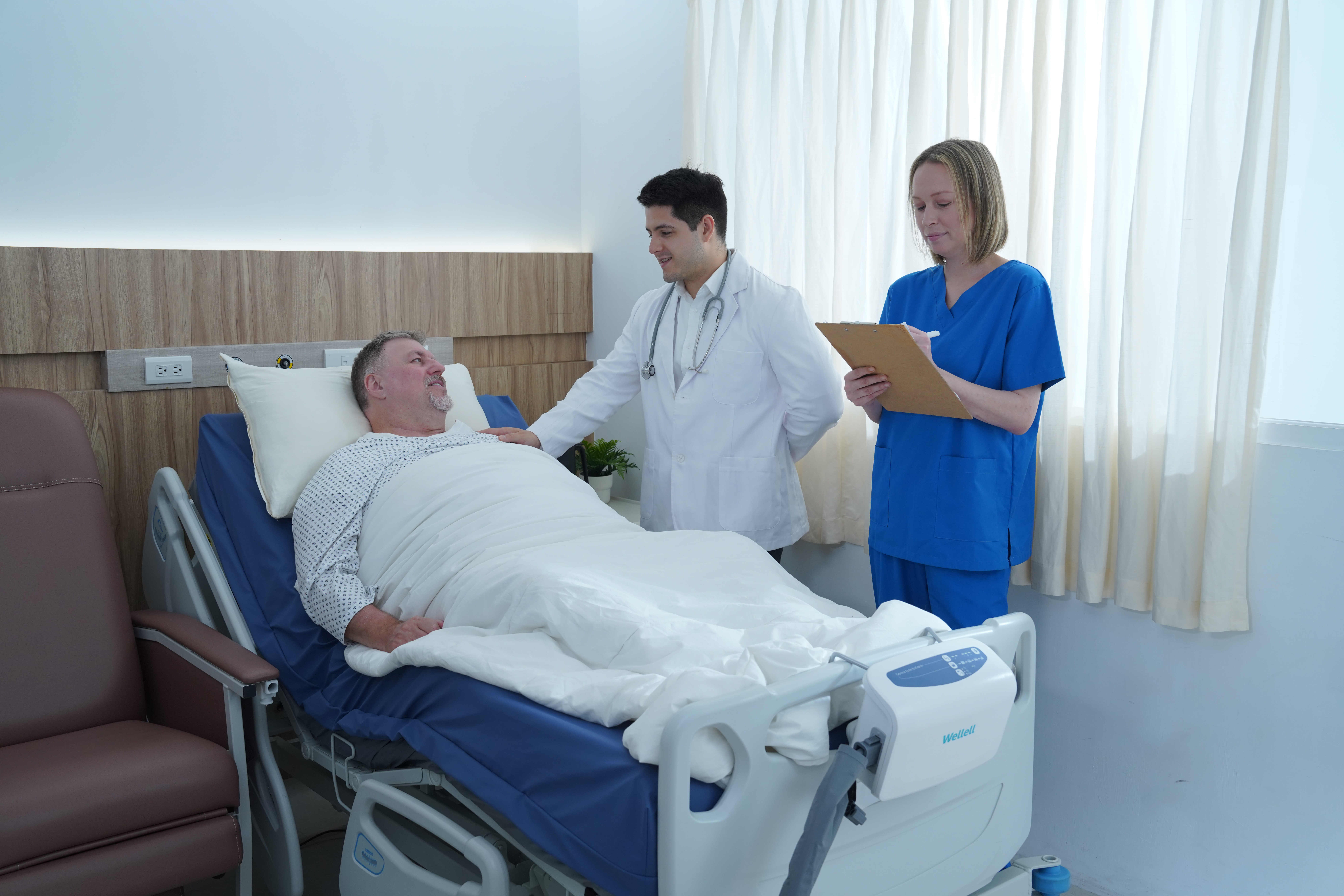Providing Better Care for Bariatric Patients
The term ‘bariatric’ is regularly used to describe adults with a BMI that is considered to be obese (over or equal to 30 kg/m2)1. In particular, a bariatric individual is defined as somebody who has limitations in health due to physical size and reduced mobility2.
The number of obese adults in the UK has been steadily increasing, with The Health Survey for England 2021 estimating that 25.9% of adults in England are obese and a further 37.9% are overweight3. This presents significant challenges for the medical and caring communities.
In particular, bariatric adults face the loss of autonomy, social isolation, depression, and the risk of developing multiple health comorbidities. One area of high risk is skin breakdown, including the occurrence of pressure ulcers. When considering both the score on the Braden scale and the body mass index as predictive of pressure ulcers, obese patients were approximately 2 times more likely to experience an ulcer than normal weight patients4. Factors which relate to this include increased adipose tissue, excessive sweating and heat retention, and impaired transport of nutrients and oxygen around the body. Reduced mobility, as well as a compromised diet and such as other illnesses, are also contributing factors5.
Thankfully for carers, the prevention and management of pressure injuries requires a similar process to that of patients with a normal BMI. This includes an emphasis on skin care and patient hygiene, consistent repositioning, and education. In addition, the use of pressure-reducing surfaces is particularly significant, as well as equipment which is suitably adapted to a bariatric patient’s needs. Most notably, it should be emphasised that all staff stay sensitive to the patient’s specific needs, and always seek to preserve their dignity6.
In particular, in maintaining dignity, individuals who are overweight or obese may exceed the safe weight and dimensions for medical equipment. When selecting equipment for bariatric patients, one needs to ensure that the equipment is safe, and the patient does not surpass any weight limits. There must also be enough space for an individual to turn, with greater bed widths of over the standard 90cm required for safe repositioning of dependent individuals7.
Wellell offers a variety of bariatric products which are suitable for improving treatment provided to bariatric patients. This includes the Pro-care Auto Bariatric, featuring a support surface width of 120cm, and a maximum patient weight of 450kg. We also provide the Pro-Bario bed, with a width of 120cm and safe working load of 260kg, and the Pro-Bario Active, with a width of 120cm and safe working load of 350kg.
Take a look at our full product range to understand more about our offerings for bariatric patients, or contact us to learn more about this innovative pressure injury solution. Let’s work together to provide better treatment.
Our Product Range
1. World
Health Organization (WHO) (n.d.) Obesity. Available at: https://www.who.int/health-topics/obesity#tab=tab_1
(Accessed: 3 July 2024)
2. Rotherham
Doncaster and South Humber NHS Foundation Trust (RDaSH) (n.d.) Bariatric
Policy: Care of the Bariatric Patient. Available at: https://rdash.nhs.uk/policies/bariatric-policy-care-of-the-bariatric-patient
(Accessed: 3 July 2024)
3. House
of Commons Library (2022) Adult obesity in England. Available at: https://commonslibrary.parliament.uk/research-briefings/sn03336/#:~:text=Adult%20obesity%20in%20England,is%20classified%20as%20'overweight
(Accessed: 3 July 2024).
4. Finkelstein,
E.A., DiBonaventura, M.D., Burgess, S.M. and Hale, B.C. (2010) 'The costs of
obesity in the workplace', Journal of Occupational and Environmental Medicine,
52(10), pp. 971-976. Available at: https://www.ncbi.nlm.nih.gov/pmc/articles/PMC4385001/
(Accessed: 3 July 2024).
5. Wounds
UK (2023) Best practice statement: holistic management of venous leg ulcers.
Available at: https://wounds-uk.com/wp-content/uploads/sites/2/2023/02/content_11706.pdf
(Accessed: 3 July 2024).
6. Rotherham
Doncaster and South Humber NHS Foundation Trust (RDaSH) (n.d.) Bariatric
Policy: Care of the Bariatric Patient. Available at: https://www.rdash.nhs.uk/policies/bariatric-policy-care-of-the-bariatric-patient/
(Accessed: 3 July 2024).
7. Johnston,
M. and MacKay, M. (2018) 'Evidence summary: prevention of pressure injuries in
individuals who are overweight or obese', Wound Practice and Research, 26(3),
pp. 122-130. Available at: https://journals.cambridgemedia.com.au/wpr/volume-26-number-3/evidence-summary-prevention-pressure-injuries-individuals-overweight-or-obesity
(Accessed: 3 July 2024).


